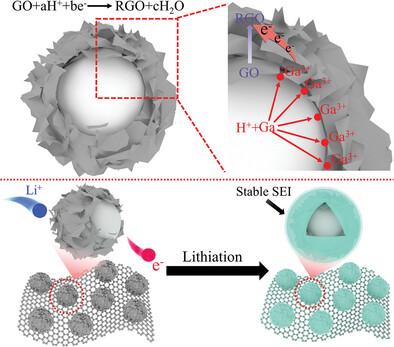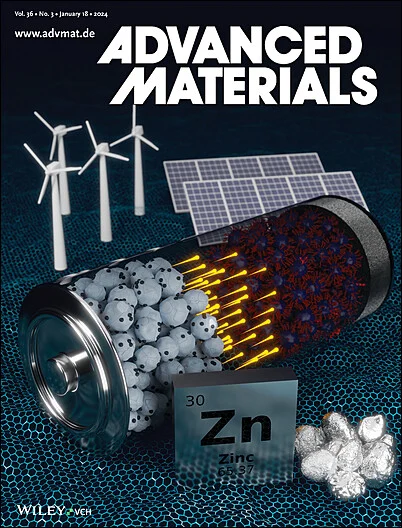Hierarchical-Structured RGO@EGaIn Composites as Advanced Self-Healing Anode for Room-Temperature Liquid Metal Battery
IF 27.4
1区 材料科学
Q1 CHEMISTRY, MULTIDISCIPLINARY
引用次数: 0
Abstract
Gallium-based liquid metal (LM) has emerged as a promising candidate anode material for lithium-ion batteries (LIBs), exhibiting high theoretical capacity, excellent electrode kinetics, and unique self-healing ability. However, the liquid-solid-liquid transition during the electrochemical reactions can disrupt the solid electrolyte interphase (SEI) and damage the structural integrity, ultimately limiting the cycling stability. Here, hierarchical-structured reduced graphene oxide coated eutectic gallium-indium liquid metal particles (RGO@EGaIn LMPs) are synthesized using a facile self-assembly strategy. The customized RGO@EGaIn electrode demonstrated impressive performance in both half-cell and full-cell configurations for LIBs. The morphological and phase transitions of RGO@EGaIn LMPs during the lithiation/delithiation processes are uncovered by real-time in situ transmission electron microscopy tests. It is clarified that the presence of RGO in the hierarchical structure buffers the volume expansion of LMPs from ≈160% to 125% and provides a fast pathway for the rapid transfer of ions and electrons during the electrochemical reaction, which effectively enhances the electrochemical performance of the electrode. This work introduces a straightforward and effective method for preparing high-performance room-temperature liquid metal electrodes, representing a significant step forward toward the commercial application of liquid metal batteries.

求助全文
约1分钟内获得全文
求助全文
来源期刊

Advanced Materials
工程技术-材料科学:综合
CiteScore
43.00
自引率
4.10%
发文量
2182
审稿时长
2 months
期刊介绍:
Advanced Materials, one of the world's most prestigious journals and the foundation of the Advanced portfolio, is the home of choice for best-in-class materials science for more than 30 years. Following this fast-growing and interdisciplinary field, we are considering and publishing the most important discoveries on any and all materials from materials scientists, chemists, physicists, engineers as well as health and life scientists and bringing you the latest results and trends in modern materials-related research every week.
 求助内容:
求助内容: 应助结果提醒方式:
应助结果提醒方式:


